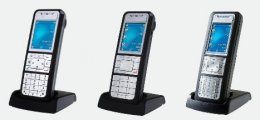 If you’re looking for a way to add mobility to your workplace communications, you’ve likely explored the option of leveraging your existing WiFi infrastructure. At first glance, it seems like an ideal solution – money saved, plus mobility benefits. But when it comes to carrying voice, is WiFi always up to the task?
If you’re looking for a way to add mobility to your workplace communications, you’ve likely explored the option of leveraging your existing WiFi infrastructure. At first glance, it seems like an ideal solution – money saved, plus mobility benefits. But when it comes to carrying voice, is WiFi always up to the task?
WiFi is a packet technology intended for data communications, making it less reliable for voice. Successful VoIP deployments must prioritize voice over data, or there is a risk of audio gaps, distortion, and dropped calls.
DECT technology was designed from the start to support voice. It operates on an isolated frequency, dedicating all of its resources to voice. In fact, DECT technology has been a proven voice solution for over 20 years.
In terms of scalability, DECT surpasses VoWiFi, which typically supports seven active handsets per access point, with a more realistic limit of four or five active handsets before quality suffers. Mitel’s SIP-DECT solution, for example, supports up to 8 simultaneous voice channels from a single base station.
Let the experts at CTS set up your facility with a DECT solution for crystal-clear, wireless voice communications. Contact us today: (800) 787-4848 or jnolte@ctsmd.us.